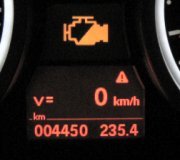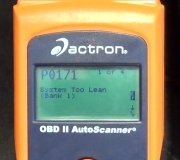You have the right idea, but you're looking at this incorrectly. A ground wire that is disconnected will result in too little current flow, as in a dead circuit. What you started out describing is damage from too much current.
The wires that are hot all the time are few. The one that causes the most trouble is the fat one, usually red, that bolts to the back of the alternator. It's well protected, but if a wrench or socket touches that nut and anything metal on the engine at the same time, it will cause a fusible link wire to burn open on older models, or a very large fuse, usually bolted into the under-hood fuse box, to blow on newer models. Either way, once the fuse device has blown, you'll no longer get sparks when connecting the battery.
The next wire is the larger positive battery cable that runs down to the starter solenoid. That cable is never fused. It's hard to make it have a short by accident. A better suspect for that cable is an extra wire that was bolted on to the starter solenoid's large copper stud. GM is famous for adding a second wire on that stud to feed the rest of the vehicle. They use it a convenient tie point, rather than running that wire all the way back to the battery. Most mechanics are used to seeing that extra wire, and we've all run into problems we created for ourselves when we replace the starter and forget to reinstall that second, smaller wire. To add to the confusion, some manufacturers, mostly imports, use one of the starter bolts to attach one of the ground wires. It's not outside the realm of possibility someone mistakenly found a ground wire like that and put it on the battery cable stud. On Chrysler products, there's always just the one battery cable bolted onto the starter solenoid. If you find a second wire, it doesn't belong there.
The last wire that's always hot is the smaller red one on the battery's positive cable clamp. That one runs to the under-hood fuse box. Once it reaches that fuse box, every circuit it feeds is fused. Other than the alternator's output circuit fuse, the largest one in this box is generally no bigger than a 40-amp fuse. Here again, if a wire leaving that box is grounded, its fuse will blow, then there's no more sparking when you connect the battery cables.
There's a simple trick that will help you find the short. That is to remove one battery cable, (we usually do the negative one so nothing happens if you touch the metal tools to the cable and vehicle at the same time), then connect a small 12-volt light bulb between the cable and the battery post it came from. I typically use a 3157 brake light bulb. Those are easy to connect small jumper wires to. When a direct short is present, as you're describing, that bulb will light up full, normal brightness and limit current to a safe one amp. The bulb will get very hot, so be careful to not lay it against anything. Now you can disconnect plugs and move wire harnesses around. When you do something to make the short go away momentarily, the bulb will get dim or go out.
There's one major clinker with this method in this application. That comes into play more often when we're looking for the cause of a small drain on the battery. You'll need to be aware of this either way. That is it can take up to 20 minutes for some computers to go to "sleep mode". Until that happens, the electrical system can draw up to three amps. Right now those computers are dead, as in not functioning. That doesn't change if you get a shower of sparks when you reconnect the battery. The concern here is with my test bulb in the circuit, and it's full brightness, indicating something is shorted, when you do something that removes the short, the bulb is likely to remain bright. That's due to the computers trying to go to sleep mode. They won't be able to because the test bulb is using up too much of the 12 volts, leaving too little to turn the computers on so they can time out.
In this case, I would start out using a common 9004 headlight bulb instead of the 3157. Headlight bulbs draw five amps on low beam. It also gets very hot. Don't touch the glass part of that bulb. When it gets hot, your fingerprint grease will burn through the glass and damage the bulb. What you would need to do is unplug and wiggle things while watching that bulb's brightness. You should be able to detect a slight drop in brightness when the short is gone. Also, you are likely to see the brightness pulsating about once or twice per second, but that might take a while to show up. That pulsing is due to the computers trying to go to sleep mode, but the low voltage tricks them into waking up again. This can happen over and over. The secret now is to use a third jumper wire to short out the light bulb. The pulsing brightness proves there's no dead short at this time. Placing a jumper wire across the bulb is the same as reconnecting the negative cable to the battery post. Now the full three amps needed can get through to run the computers until they time out. The bulb will be off because it is being bypassed by the jumper wire. Now just wait at least 20 minutes, then remove that jumper wire across the bulb. What's flowing now is called, "ignition off-draw, (IOD) current. That must be less than 35 milliamps, (0.035 amps). That is way too low to cause the filament in the bulb to glow. Also, at such a low current, the bulb will be "dropping" very little of the 12 volts. The computers will get plenty of voltage to remain in sleep mode.
It's important to be aware that if you do anything now to break the circuit, even for an instant, the computers will wake up again and require another 20 minutes to time out. For those measuring IOD current, breaking the circuit even happens when simply changing the range on the multimeter. The meter, like the test bulb, must be bypassed with that third jumper wire while the meter is switched.
This light bulb trick works great to bypass a fuse that keeps blowing, or a relay when you want to power up and diagnose a circuit without needing to run the engine or even turn on the ignition switch. I put together a set of drawings to explain those procedures better. I never did that for your problem because we don't run into it very often. If it will help, let me know, but I have to do that at home, so it can take a day or two. The procedure is very simple, but a drawing does a better job of explaining what I'm asking you to do.
If you aren't familiar with the small jumper wires I referred to, Harbor Freight Tools has a pack of ten, in five different colors, for about $3.50. I buy them two or three packs at a time and cut them up for other projects. I've found that quite often, when they crimp the little alligator clips to the ends of the wires, they don't do a careful job and there can be intermittent connections. Doesn't help to have intermittent test equipment when you're trying to diagnose an intermittent problem. Now, as soon as I get a pack of these clip leads, I slide the boots off and solder the wires to the clips. Just another tidbit of knowledge to be aware of that might prevent some frustration.
Let me know if you understand what to do, and what you find. I'm here for a few hours almost every day, but don't panic if it takes almost a whole day for me to reply.
Tuesday, December 26th, 2023 AT 6:49 PM













